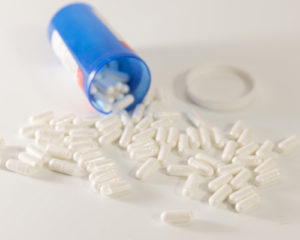Xanax is one of the most popular drugs in its class. It’s used for common issues like anxiety and panic disorders. It’s regularly in the top 50 prescription medications each year. Though it’s a useful medication, it can be addictive when it’s used for too long or in high Xanax doses.
When it comes to Xanax use, when are you moving from recreation to danger? That’s a very personal question that only you can answer. But taking drugs like Xanax can cloud your thinking, making it hard for you to form strong opinions and have good judgment.
To help, we have outlined a few signs and symptoms that could indicate your use of Xanax is heading into dangerous territory. If you notice these signs in yourself or someone you love, it’s essential to take action.
Dosage Matters
Xanax, also known as alprazolam, is a prescription medication. Doctors prescribe different dosage levels for their patients, depending on the symptoms they are treating with Xanax. The dose includes the amount you take at one time, the amount you take per day, and when to take Xanax.
According to the Mayo Clinic, adults taking Xanax for anxiety are typically encouraged to take up to 0.5 mg (milligrams) three times per day to keep symptoms under control. Adults with panic disorder might take up to 1 mg once per day for their symptoms.
Whether you are taking Xanax to assist with a mental health issue, or you are taking the drug on a recreational basis to make life a little more pleasurable, the drug works in the same manner. It attaches to receptors within the brain, triggering a series of chemical reactions that slow down overall brain activity while allowing chemical signals of pleasure to build up.
That chemical action is responsible for the symptom release people experience. Those same chemical reactions can also deliver a high.
It is not at all uncommon for people with an addiction to Xanax to take doses that are much higher than those a doctor might prescribe. For example, the singer from the band Korn told a reporter writing for Forbes that he was taking 4 mg of Xanax per day at the height of his addiction.
That dose is much higher than the dose a doctor is likely to prescribe. It indicates that use of the drug is moving from something a person is controlling into something that is controlling a person. Escalating use by increasing the size of doses is one indication that addiction might be in play.
Understand Tolerance

Why do people take bigger doses of Xanax? That question can be answered with a discussion of drug tolerance.
Each dose of Xanax you take in creates changes within the cells of the brain. In time, those brain cells become accustomed to operating under the influence of Xanax. Some receptor cells stop functioning with small doses of the drug, and that means taking those doses produces no change at all.
If you are taking Xanax to get high, that can mean the doses you once took do not produce the euphoria you are accustomed to. To get those happy feelings back, you must take a larger dose. In time, you must increase that dose again as your brain cells become accustomed to that larger dose.
According to research published in the journal Advances in Pharmacological Sciences, tolerance to benzodiazepines like Xanax happens relatively quickly. Also, people can become physically dependent on the changes Xanax brings about. When the drug is gone, they can develop nasty withdrawal symptoms, and those symptoms can keep people taking Xanax even if they want to quit.
Common Withdrawal Symptoms Include:
- Shaking
- Sweating
- Nervousness
- Insomnia
- Digestive distress
- A racing heart
If you find that you’re experiencing symptoms of tolerance, or you experience withdrawal symptoms between doses of the drug, you could need help for a substance abuse issue.
Other Signs to Watch For
In a study in the journal CNS Drugs, researchers were able to identify problematic Xanax use by looking at how often people shopped for doctors who would help them. In this study, about 2 percent of people who had a prescription for Xanax looked for additional doctors to fill prescriptions for the drug.
If your addiction began with a prescription, you might head back to your doctor often to get that prescription refilled. In time, your doctor might question why you need multiple refills, and they might refuse to give you the drug. If you start making appointments with other doctors, using a hospital, or heading to an urgent care clinic in the hopes of getting more Xanax, this is a warning sign of addiction.
Xanax is a powerful drug on its own, but as an addiction deepens, you might be tempted to add other drugs to your daily dosage mix. This is especially true if you have struggled to get enough Xanax to keep symptoms of withdrawal at bay. Adding other drugs might seem like the best way to get the high you want.

Adding things like alcohol to your Xanax dose can be deadly. In research published in the journal Drug and Alcohol Dependence, researchers found that in 94.9 percent of alprazolam overdose cases, other drugs were present. Combining drugs can lead to reactions you did not expect and cannot control. At times, those reactions can come with life-threatening consequences. If you are ever tempted to add something else to your Xanax dose, your drug use is moving into dangerous territory.
Finally, the way you take your Xanax dose can also indicate a problem. Xanax is typically available in a pill format that you swallow without chewing. The drug works its way through the digestive system, eventually moving through the bloodstream and into the brain. This process can take time, and some pills come with additional chemical properties that allow the doses to be released slowly over a specific period.
As an addiction grows, you might be tempted to get the entire power of the dose all at once, bypassing the digestive system in the process. According to the U.S. Drug Enforcement Agency, people with a Xanax addiction do that by crushing the pills and snorting them. That allows the drug’s molecules to move into the body through mucous membranes in the nose. That is a much faster route of administration than the digestive system.
Shifting from swallowing pills to snorting them is a clear sign that your drug abuse is escalating. At this point, it might be hard to convince yourself you are taking the drug for any purpose other than to get high. There is no way that taking the drug in this manner could be considered healthy or therapeutic.
Frequently Asked Questions About Xanax
If you have a panic or anxiety disorder and you’re considering taking Xanax, you may have questions about the medication. If you’re taking the drug recreationally, it’s important to understand that taking it in high doses or for a long time risks you developing dependence and addiction. Here are some answers to frequently asked questions about Xanax.
Can You Take Xanax Every Day?
Xanax is prescribed as a daily dose. A starting dose of Xanax for anxiety is 0.25 mg to 0.5 mg that is taken three times daily. In many cases of therapeutic drug use, the drug is intended to be taken daily until you taper off it with the hope that it will help your brain return to normal. However, a daily dose that lasts for too long can risk tolerance and dependence.
How Long Should You Take Xanax?
Xanax is recommended to be taken for no longer than six weeks. Taking the drug regularly for longer than that risks chemical dependence and addiction. However, doctors often prescribe Xanax for longer periods than recommended. In many cases, doctors and patients make judgment calls when it comes to the risk of a drug versus its potential benefits. If you have a severe panic disorder and Xanax helps when other drugs don’t, your doctor may recommend taking it for a longer time. However, long-term use can also lead to tolerance, which can cause the drug to be less effective than it once was.
If you are prescribed Xanax for longer than six months, your doctor may encourage you to use it “as needed.” That means you should only use it in situations where you need to avoid symptoms or when you are feeling uncomfortable symptoms. If you can go about your life without the medication, you shouldn’t take it every day.
How Much Xanax Is Too Much?
When you’re given a prescription, it’s important to pay attention to the dose. Taking more than what is prescribed can be too much. When you first start taking Xanax, you may start with a small dose to gauge your reaction to it before taking a full dose. Some people may be sensitive to certain medications, which can cause serious side effects. From there, it’s recommended that you take the lowest possible effective dose. If a smaller-than-average dose relieves your symptoms, you don’t need to take the full prescribed dose.
Do I Need to Take a Tolerance Break?
A tolerance break is time spent not taking the drug to avoid tolerance or dependence. Many benzodiazepines will become less effective as your body gets used to them. Taking a few days or weeks off can return your tolerance to normal. It’s important to consult with your doctor before quitting. Benzos can cause potentially dangerous withdrawal symptoms in some circumstances. However, your doctor can help you taper off them to take a break.
What Should You Do?
If you recognize yourself or someone you love in these symptoms of addiction, know that help is available. In a structured program, you can work with professionals who can help you to understand your addiction and what you can do to get better. This team of experts can help you get sober in a controlled, safe environment, so you will not experience life-threatening withdrawal. And the team can give you the tools you need to preserve your sobriety. If you are dealing with addiction, it is time to get help.
